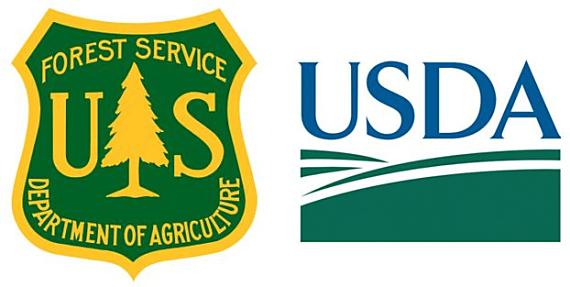Vallejo, CA… The USDA Forest Service Pacific Southwest Region and California Department of Forestry & Fire Protection (CAL FIRE) are pleased to announce the launching of 2018 data for the Urban Tree Canopy Viewer Program in California. This program allows communities to understand the extent and location of its existing tree canopy in order to implement sound management practices to optimize community services attained from trees.

The urban tree canopy cover map layer has been updated based on 2018 National Agriculture Imagery Program (NAIP) aerial imagery and LiDAR data collected by the U.S. Geological Survey. With updated data, communities can make more-informed, urban forest management decisions such as prioritizing locations for tree planting, establishing urban forestry master plans, and managing threats to canopy loss.
“Urban trees connect us to nature in our neighborhoods and beyond,” said Regional Forester Randy Moore, USDA Forest Service Pacific Southwest Region. “Conserving California’s healthy forests, including its urban ones, is a shared priority for the Forest Service, CAL FIRE, and many of our partners. We are proud to have worked together to make this tree viewer available to communities across the state that seek to sustain and improve their vital urban forests that serve people in so many beneficial ways.”
The Urban Tree Canopy Viewer provides communities the opportunity to assess benefits and services attained from tree canopy coverage and helps prioritize where those benefits are most needed. Using population and environmental characteristics, this program can help identify communities disproportionately burdened by risks that urban tree cover may help mitigate.
“Trees improve the quality of life in California’s urban environment,” said CAL FIRE Chief Thom Porter. “Not only do they help by absorbing pollutants, cleaning the air, mitigating climate change and reducing heat island effects, but trees make people happy and support their well-being. The Urban Tree Canopy Viewer is a critical tool for local urban foresters to improve management of urban forests, allowing them to target communities that need more trees the most.”
The tree canopy layer was created by EarthDefine, under contract with the Forests Service and CalFire. The layers of population and environmental characteristics were derived from CalEnviroScreen 3.0 from the California State Office of Environmental Health Hazard Assessment, and calculations of the Urban Heat Island Index are from the California Environmental Protection Agency.
The Forest Service manages 18 National Forests in the Pacific Southwest Region, which encompasses over 20 million acres across California, and assists State and Private forest landowners in California, Hawaii and the U.S. Affiliated Pacific Islands. National forests supply 50 percent of the water in California and form the watershed of most major aqueducts and more than 2,400 reservoirs throughout the state. For more information, visit www.fs.usda.gov/R5.


